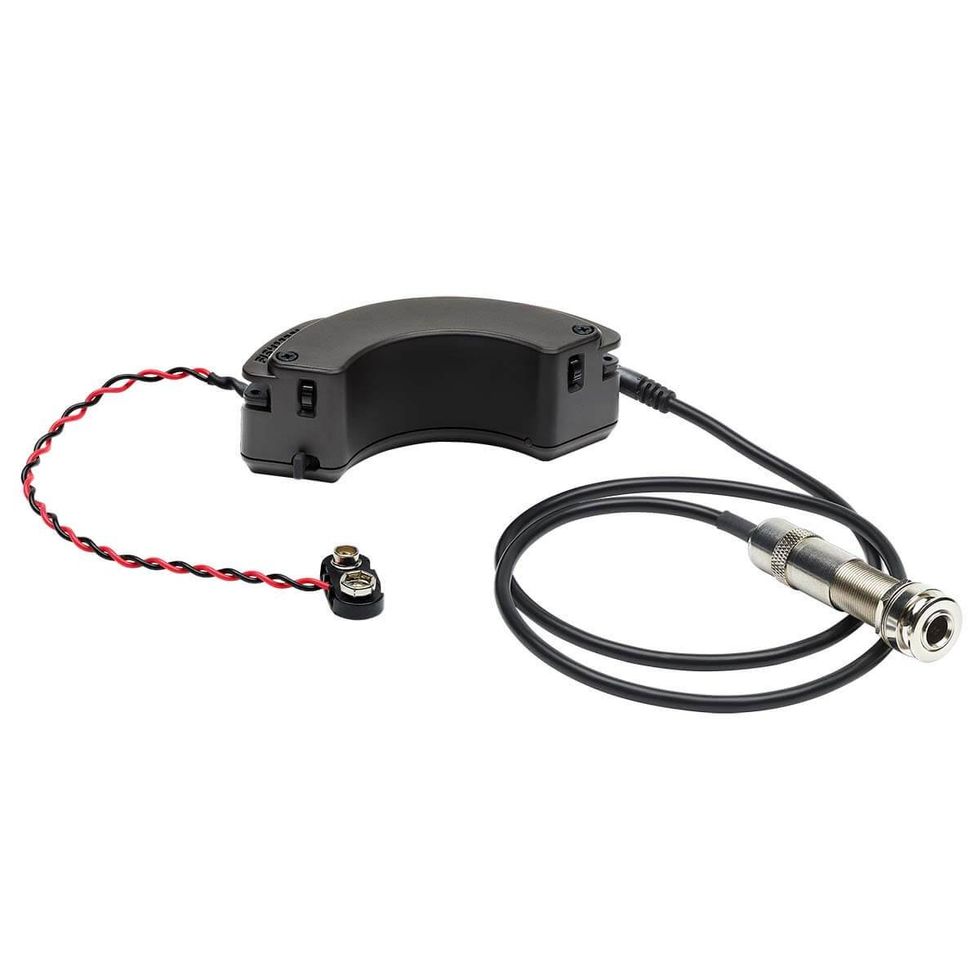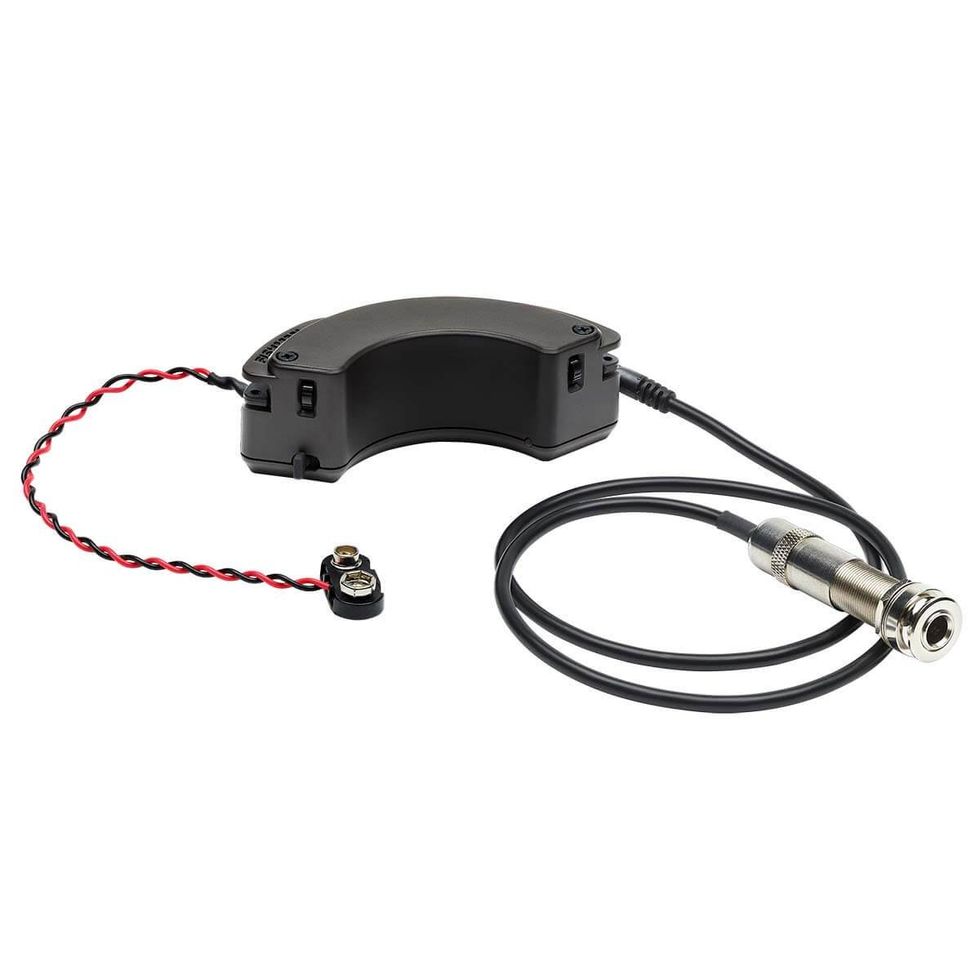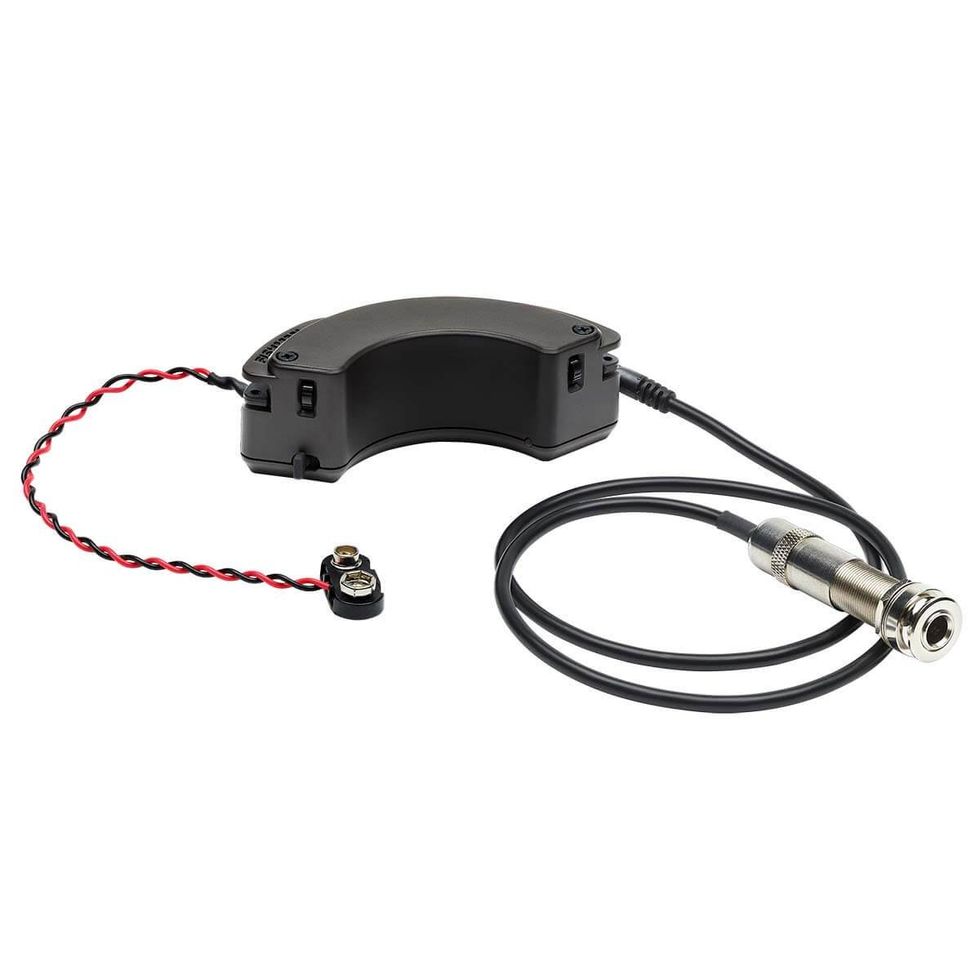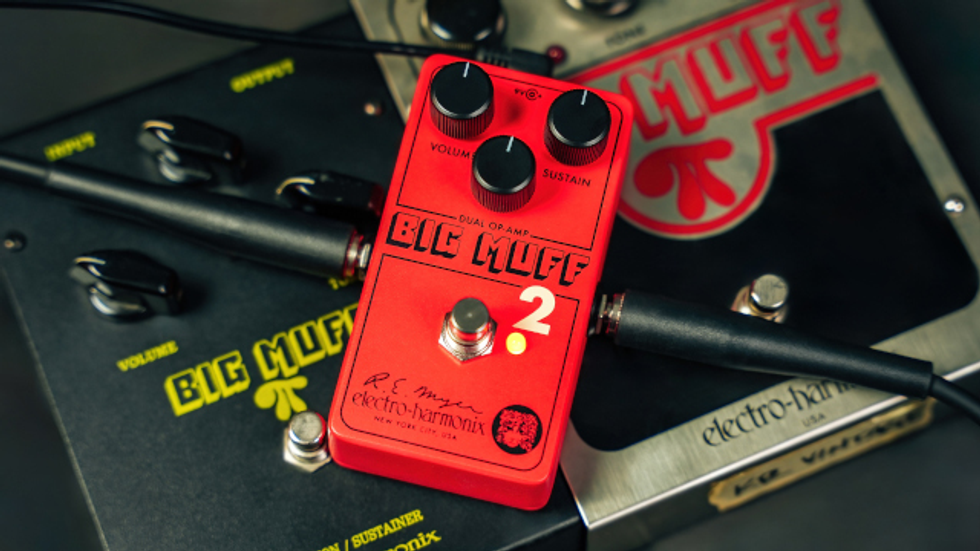Like Transylvania has vampires, Woodstock, New York, and the surrounding area has its share of luthiers— luthiers in the vein of Michael Tobias, Harvey Citron, and Joe Veillette. Having worked in Veillette’s shop since 2000, and more recently as a shop assistant with Ken Parker’s operation, Martin Keith certainly has been blessed with the lutherie equivalent of an Ivy League education. While he still divides his time between several different shops, Keith also builds a number of stunning instruments through his solo operation, Martin Keith Guitars.
The son of a well-known banjo player, Keith began playing guitar and bass when he was 15. From the beginning, the technical aspects of the instruments interested him almost as much as the musical ones. He quickly progressed from simple setups to mods and then “other bedroom-floor guitar butchery.” Long before he started building, he spent much of his free time in college hunting down trivia about guitars, instrument making, and repair. This obsession is what led him to beginning his apprenticeship with Veillette, a working relationship that continues to this day.
Keith initially built basses in his shop, with the exception of an occasional one-off guitar, but he officially introduced his new line of guitars in October 2011. “I’ll never make something that I can’t play—like a violin, for example,” he says. “I simply wouldn’t know how to make any decisions or judgments if I didn’t have an opinion as a player.” Keith’s instrument expansion represents a reflection of the direction he’s moved as a player and guitar lover, but his main inclination is toward acoustics because, he says, they have more variables to play with. “There is clear and immediate feedback from so many different factors of design and construction,” says Keith. “The builder has much wider frontiers to explore.”
He’s not afraid to experiment, including with carbon-fiber and composite neck construction. Inspired by his recent work with Ken Parker, Keith has developed a neck design that uses a softwood core, an interior shell of carbon fiber, and an outer layer of hardwood. “These necks are lighter, stiffer, and more responsive than solid-wood necks—with broader frequency response and definition, especially in the bass,” Keith says. “The strength of the carbon and the natural resonance of the softwood core really make for a great combination that’s organic and wooden sounding, strong, stable, and light.”
Striving to build from his experiences as
a player, Keith wants to remain focused on
making choices that matter at a functional
level. He’d rather not play with exotic
finishes, make crazy shapes, or be slavish
about nailing down every cosmetic detail
of, say, a ’52 Tele. Instead, Keith’s goal is
to build instruments that sound, feel, and
perform differently. “When you pick up
one of my basses with your eyes closed,
you can feel that it’s very different from
just another J bass. And for some people,
that difference is what they’ve always been
seeking,” he says. “That’s not to knock J
basses, but they can’t be right for everybody!”
As for his acoustics, Keith believes
that the best modern D-28s and L-5s are
already being made, but that there is a
sonic and stylistic middle ground between
an archtop and flattop where a lot of
intriguing possibilities exist. “My Aurioles
don’t sound like anything else,” says Keith.
“They touch aspects of many different
types of sounds, but in a combination that
is their own.”
martinkeithguitars.com
Pricing and Availability
Keith does all the work on his guitars and basses, save for having a local finisher spray a high-gloss polyester finish on the electric
instruments. While pricing varies considerably with the custom options, his electric basses start at $2,800 (with the average retail
price in the $3,500 to $3,800 range) and the acoustic instruments start at $6,000. “I am extremely flexible with options and can
accommodate almost any custom request,” says Keith, “if I think it’s a good idea!” Build time is generally between three and five
months. Though Keith’s production schedule is ever changing since he still divides his time between several shops, he produces
approximately 10–12 instruments annually.
Auriole “Panama Red”
Keith’s new Auriole design is a hybrid guitar that
uses features from both the flattop and archtop
traditions. While the curly mahogany back is X-braced,
the Sitka spruce top is lattice-braced to
evenly distribute response and vibration across
the entire surface. Keith also employs an off-axis
soundhole so the top can be built more lightly
and with more continuous surface to vibrate.
Other features include bloodwood binding,
Keith’s composite hardwood/carbon/softwood
neck, and a tailpiece and floating bridge more
typical of those seen on a Maccaferri-style instrument
(though Keith says the Auriole sounds
nothing like a Maccaferri).
Leo 4-String – Tobacco Burst
Boasting a modern shape and style combined
with a vintage look and sound, Keith’s Leo
shares the same shape as his Elfin design, but
with fewer frets (22) and a pickguard. This tobacco-
burst Leo has an ash body and a maple neck
topped with a cocobolo fretboard. Classic J-bass-style single-coils are available from either
Seymour Duncan or Aguilar, and to keep them
extra quiet, Keith incorporates extra shielding on
both the pickups and in the control cavity.
Elfin Plus Custom – Dakota Red
With its high-gloss finish and polished-chrome
hardware, Keith’s Elfin is reminiscent of a classic
muscle car. It features an ash body and a maple
neck that’s topped with a rosewood fretboard,
and it was designed for players used to the contact
and balance points of traditionally shaped
basses. Housed in one large cavity, a pair of
pickup covers conceals the pair of custom
Nordstrand pickups—a Music Man-style is closest
to the bridge and a P-bass-style is closest
to the neck. Both are driven by a Noll preamp
(optional).
Elfin 4 – Walnut/Katalox
The Elfin is a slightly downsized take on the
single-cut style, and it's Keith’s most popular
shape. The extended upper bout allows more
contact between the body and neck, which
results in a more rigid neck. This particular Elfin
has a quartersawn walnut neck and employs
black walnut for the body core, claro walnut for
the top, and two-tone katalox for the fretboard
and headstock. For electronics, this instrument
is loaded up with an Audere Classic 4-band
preamp and a pair of Nordstrand Big Single
pickups.
Elfin Plus Custom 5 – Green Flame
Loaded with custom appointments, the green
finish on this Elfin Plus Custom 5’s flame-maple
top blends beautifully with the warm, visual tone
of the katalox wood that’s used for the fretboard
and pickup cover. Also serving as a finger rest
for accurate, high-speed playing, Keith refers
to the bookmatched katalox pickup cover as an
adjustable “ramp.” Built to deliver a variety of
modern bass tones, this instrument boasts a pair
of Nordstrand FS pickups living underneath the
ramp that are driven by an Aguilar 3-band EQ.
Elfin Hollowbody – Curly Maple
The Elfin Hollowbody is Keith’s one-off experimental
take on an electric hollowbody. With bent
sides and a braced top and back, it’s built like
an acoustic instrument. And because the top
bracing for the small and slim body is designed
to flex and absorb energy in a manner similar to
a full-size acoustic, the resulting tone resembles
a larger instrument. Adorned with side apertures
allowing one to see the inner workings of the
instrument, the Elfin Hollowbody is visually
captive both inside and out. While this Elfin
utilizes curly maple for the body and spruce for
the top—along with a Lace Alumitone P-90 and
a piezo saddle for electronics—the wide variety
of wood and pickup options available allow the
Elfin Hollowbody to be tailored into a tool for a
variety of musical styles.



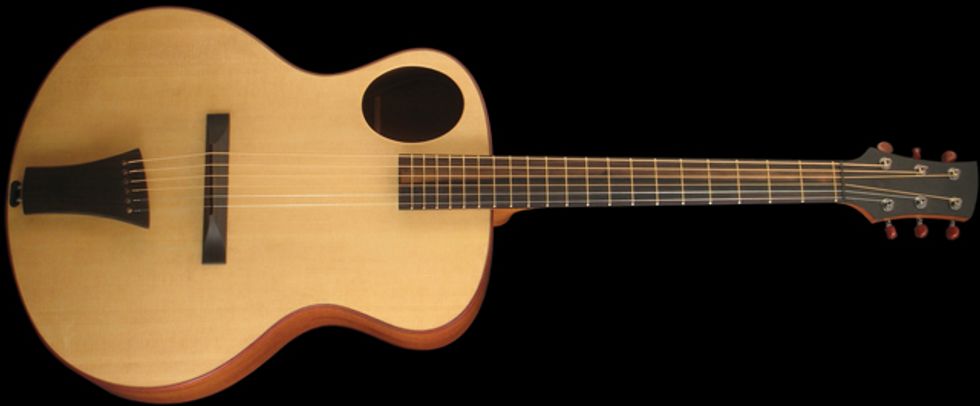




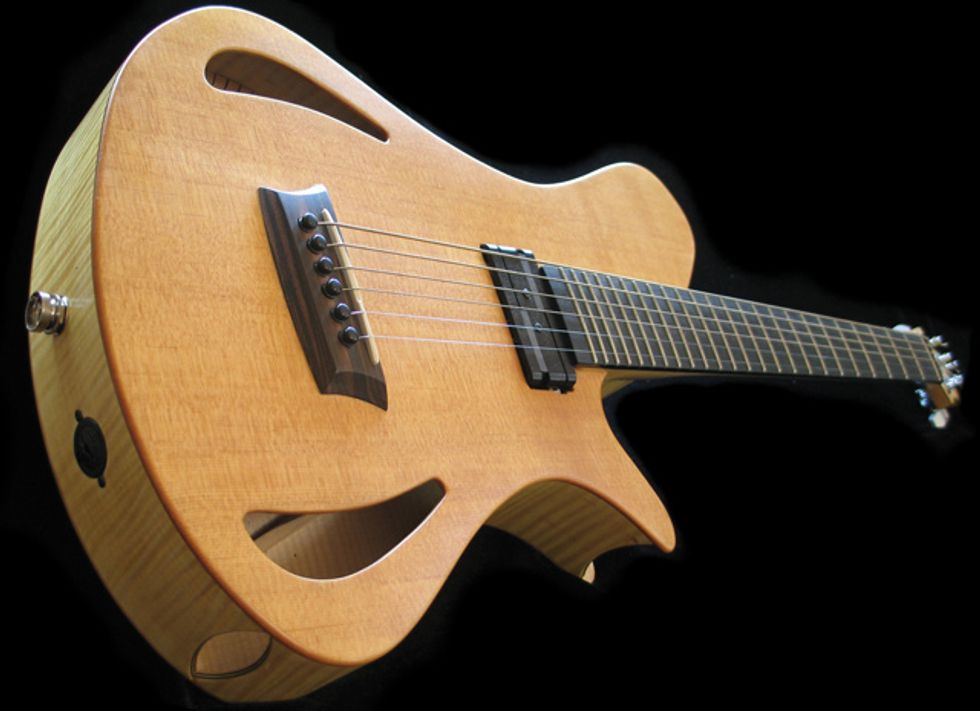







![Rig Rundown: Russian Circles’ Mike Sullivan [2025]](https://www.premierguitar.com/media-library/youtube.jpg?id=62303631&width=1245&height=700&quality=70&coordinates=0%2C0%2C0%2C0)




